Dune Architecture: Adapting Cities to Desert Conditions
Hot, dry and deadly like Arrakis, the fictional desert planet from the Dune universe is a dystopia that seems not too far off, in the light of the droughts and heat waves in Europe, China and the USA in the Summer of 2022. Like on the desert planet, desert life on earth needs to adapt to extreme conditions and so must the human population in cities.
On Arrakis, days are deadly outside, water conservation is paramount and life must carve out living space underground - much like life on earth in similar conditions. How will the future for building cities look like? What strategies and nature-based-solutions can we learn from and adapt to cities? Let’s explore some principles that decision makers on all levels, urban planners and architects can use to let future life in cities not only survive, but thrive!
In this article we discuss some general principles for living under extremely hot and dry conditions and how we can use them to make cities fit for hotter and dryer conditions that are becoming reality for cities. We will condense our discussion into several Urban Planning Takeaways for Dune-style urban policies, engineering and architecture around the following chapters (click to jump to individual sections): Blistering Surfaces, Reflection and Albedo, The Underground, Shade, Activity & Timing, Hot Health and Space vs. Surface. Let’s go!
The hero-protagonist in Dune is named Muad’Dib after a little, long-legged kangaroo mouse or Jerboa living in the desert:
“Muad’Dib is wise in the ways of the desert. Muad’Dib creates his own water. Muad’Dib hides from the sun and travels in the cool night. […] Muad’Dib we call ‘instructor-of-boys.’ That is a powerful base on which to build your life […]”
(Dune by Frank Herbert)
In arabic the word ﻣُﺆَﺩِّﺏ (mu’addib) means teacher/tutor - and like our hero-protagonist in the book we must learn from the desert in order to survive. We will not only learn from desert mice, but a variety of desert creatures and plants, how to design cities that can withstand rising temperatures and more frequent water stress.
The lay of the desert land
Not all deserts are made equal - we are looking at hot, dry deserts for the nature of their surface: In low latitudes around the equator, desert surface temperatures can exceed 70°C (158°F), hot enough to destroy skin on unprotected hands and feet. Even in higher latitudes like in Central Europe or North America, dry surfaces can become quite hot - we measured more than 50°C (122°F) on a moderate summer day in Vienna, Central Europe (see our article about urban surface temperatures), which is still hot enough to cause first- and second-degree burns.
Direct (=shortwave) solar radiation, that travels along with the visible sunlight, is the main energy input that causes these temperatures: Wherever this radiation hits a surface, it causes it to heat up. The energy input is considerable: per square meter up to 1kW - that’s like one powerful hair dryer constantly heating up two square meters of ground. Of all the radiation energy, that the sun sends our way 75% goes into surface heat.
But how do surface temperatures relate to air temperature? The graph below shows an example of the temperature differential above and also below the surface of a hot desert. Temperatures change within centimeters - a lot!
A hot day in the desert can easily show weather-report air temperatures of 38-39°C (102°F), like in our interactive graph below.1 This meteorological air temperature is usually measured at a height of 1.5 meters and that is also what the weather forecast uses. In our desert example this means that the surface of the desert has a temperature of 75°C (167°F)! Within just 1.5 meters the temperature drops by 35°C from skin-blistering to very-hot-summer-day!
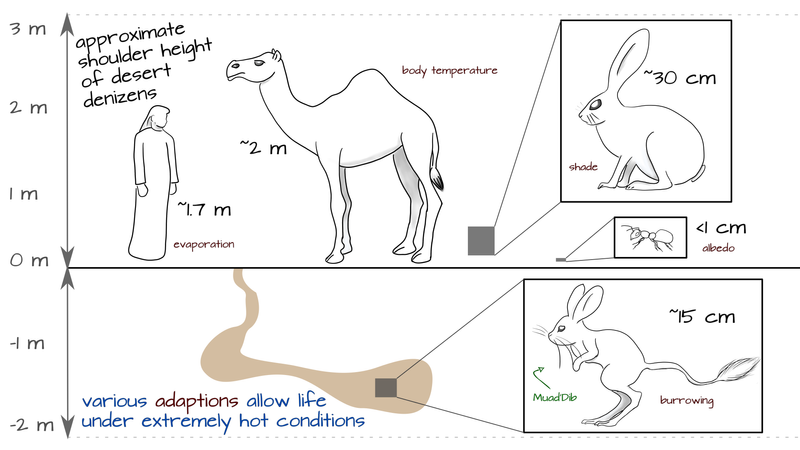
That means, that children and pets are confronted with considerably higher air temperatures than adults simply because they are closer to the ground.
How extreme this temperature differences are, depends on a number of factors, but mainly on wind speed and turbulence. The air is much cooler than the desert surface and when they get in contact, they exchange energy, causing the air to heat up and the ground to cool down a little. The rapid increase of air temperature at the contact surface causes density differences in the air, that are sharp enough to influence the path of visible light. We can see this as shimmering above hot surfaces and sometimes as desert mirage.
This is also the reason why microclimate simulations, that hope to accurately capture these temperature changes, must use several calculations layers in the vicinity of surfaces. The City of London for example, requires at least three such refinement layers below 1.5 meters2 - a resolution of ~50 centimeters -, which is in our view the minimum requirement to capture these effects in any accuracy. Inferior simulation tools cannot capture these resolutions and companies cut corners with this, since higher-resolution layers increase simulation time and cost. For our models it is standard to use refinement layers down to an average of 50 centimeters at least and often even better to resolve all important surface features, like walls, awnings, balconies, green walls and similar structures.
The below-ground temperature difference is often more extreme than above ground, especially when the ground is wet. In our graph for dry soil, the temperature falls relatively slow (data from North/Middle America), for ground that retains more humidity, temperatures can quickly drop below 25°C already at a depth of one meter, even if the surface is very hot.
Urban Planning Takeaway: Air temperatures change drastically around pedestrian level and near all urban surfaces. Use high-resolution microclimate simulations to accurately capture these effects for planning of human-accessible spaces.
Desert climate adaptions
Let’s look at some evolutionary adaptions to these extreme conditions and how we might use them to design cities for the mitigation of hot and dry climate.
Albedo and reflection
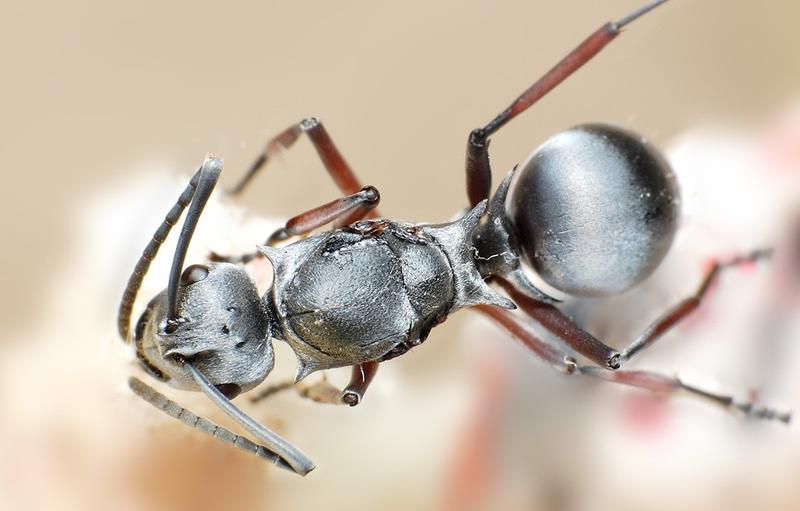
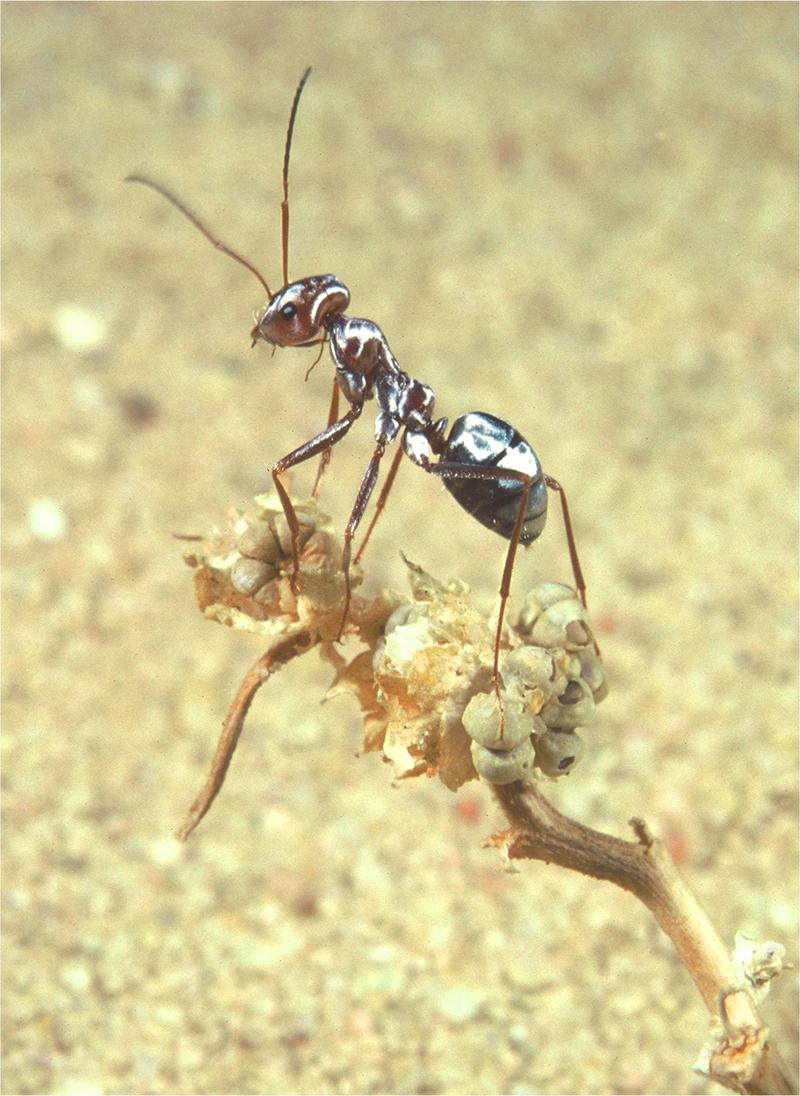
Highly reflective surfaces help to keep things behind them cool because the incoming solar radiation is not turning entirely into heat but is partially reflected back out into space. This is especially important during local noon, when the solar radiation hits horizontal surfaces at an angle close to 90°, the maximum radiation input of a day.
One desert critter that thrives in these conditions is the Saharan silver ant. This little ant is active on the desert surface in extreme heat, when it is too hot for their predators to move in the open. Amongst other things this is made possible by their highly reflective surface hair, that has a silvery, almost mirror-like quality to radiate as much energy back into the depths of space as possible.
The ants also have unusually long legs and will climb vegetation for cool-down breaks. Every millimeter more distance from the surface brings the temperature down as we have discussed above.
Urban Planning Takeaway: Sun-facing surfaces should have a high albedo. Direct solar radiation into buildings should be minimized, by reflecting as much as possible already at the building surface.
These rules have an important gotcha however: the reflected radiation should avoid to increase the incoming radiation for pedestrians and other built structures. The most effective use of this is for roofs and temporary window shading that reflects back towards the sky.
Earth and sky
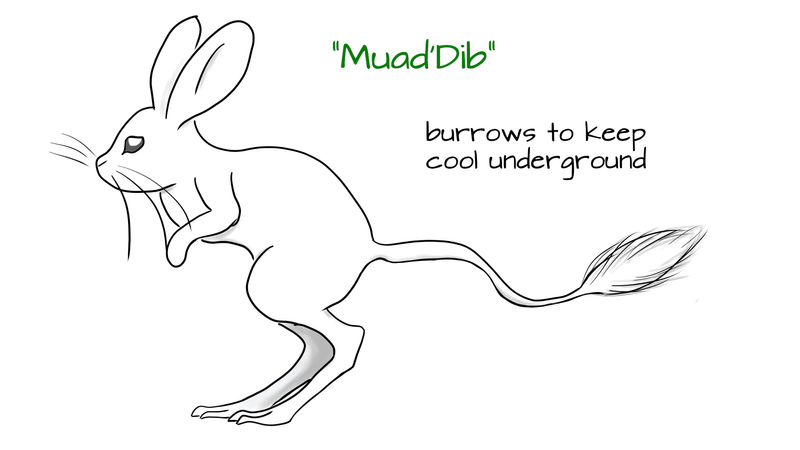
Our little Muad’Dib digs burrows that can reach down into the ground for up to 3 meters deep. Like many animals it avoids the worst heat by spending the hottest hours of the day in burrows that are much cooler (and more humid) than the desert surface. Even though it costs a lot of energy to build burrows, this is one of the most employed survival adaptions in deserts.
With increasing depth, diurnal (day/night) temperature swings quickly become smaller and after a couple of meters, the soil temperature remains largely constant with slow seasonal swings in the upper soil layers.
This can also be used for building energy management in the form of geothermal heat pumps, that cool buildings by moving energy below ground when it is hot in summer and heat buildings by using this energy in winter. These systems can be combined with air heat pumps and thermal activation of building elements.
This is mimicking - in a sense - what Muad’Dib does, but instead of going underground ourselves, we transport (pump) low-temperature air into our buildings when it is hot. In addition - and beyond what animals are capable of - we can also pump high-temperature air from undergrounds into our buildings when it is cold.
There are many different heat pump systems (heating, cooling, combined, shallow, deep, …) that human ingenuity came up with. Despite all sophistication, however, there is another lesson to learn from nature: no resource is boundless and care must be taken to keep underground thermal imbalances at a minimum over years of operation. Even large heat sinks and sources don’t have endless capacity and may be exhausted, resulting in reduced efficiency and environmental damage.
Urban Planning Takeaway: Use geothermal heat pumps to shift energy between above- and under-ground, if possible in combination with thermal activation of building elements and adjusted to local heating and cooling requirements.
Shade
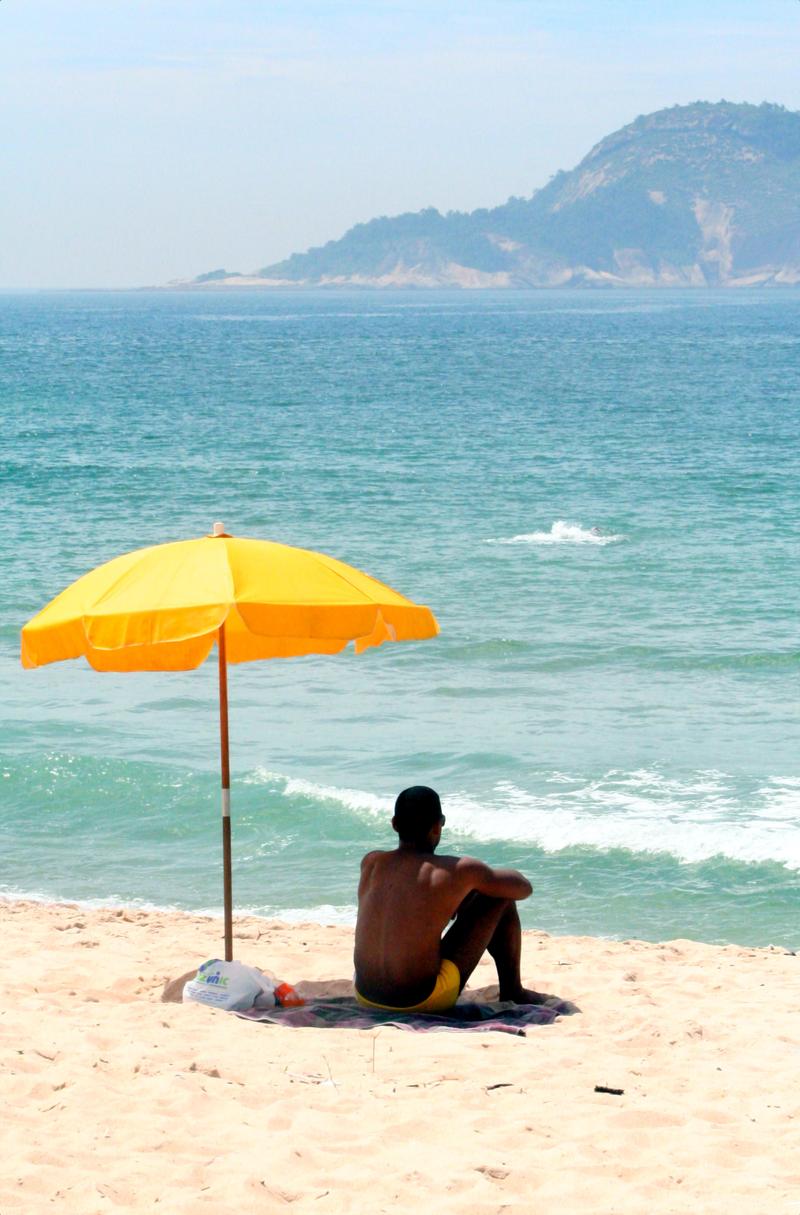
Besides reflecting solar radiation back into space, it is also possible to avoid its influence by blocking it and creating shade. The concepts are similar and can overlap, but shading is more focussed on keeping radiation induced heat at a distance while reflection strives to get rid of the energy altogether.
Let’s look at tree shade as an example. Trees with their relatively dark green leaves, don’t reflect a lot of sunlight, instead, they absorb it. Only about 1-2% of the sunlight is used for photosynthesis, a small part is reflected and the rest, the biggest part, is absorbed as heat. While plants, unlike humans, can tolerate leaf temperatures temperatures up to 45-55°C, like humans they sweat (evaporate water) to stay cool.
So when you are resting in a cool tree shade, it is because a couple of meters above your head, the tree absorbs the brunt of the heat and keeps the energy from solar radiation at bay. Unlike our silver ants, trees - and low albedo shading in general - does not reflect energy back into space, they just keep it away from where most humans move around. Where can we see this in desert adaptions?
Desert hares are a good example: they require vegetation large enough to throw shade, in areas were no or only low vegetation is available they cannot live.
The implications of this may seem obvious, but in practice we often see public places built with little to no consideration for shade, turning places that are busy in the evening into the literal, lifeless urban concrete deserts at noon.
While all built surfaces are cooler in the shade (5-10° C in many cases), the most effective use is when protecting persons from direct solar radiation. In direct sunlight radiation can add about 300 W of energy to a body - the biggest single source of heat for a resting person. Consequently, removing this heat source for resting people is the literal low-hanging fruit in climate change mitigation architecture. Especially in places were people are expected to rest (open air dining, benches, any kind of seating in public places, bus stops …) this should be the method of choice.3
Shading comes in many different shapes and forms following local requirements. In many settings, trees are great at this. In higher latitudes, deciduous trees have the advantage to shed their foliage in autumn to allow solar radiation to reach the ground when it’s beneficial and block it during summer when it’s not. Trees also have the advantage to increase air velocity below them, which is helpful for human thermoregulation.
However in many cases, trees cannot be used for shading, for example because there is not space for crowns, a lack of water or soil depth for big trees, or they would need to be placed in locations where they hinder night time air flows. In these situations technical shading is an excellent alternative that may sometimes even be built in the form of a green roofs - optionally with photovoltaic panels - which brings additional benefits as energy source, micro-habitat and for water retention.
Urban Planning Takeaway: Shade persons from direct sunlight wherever possible, in places where they might linger. Any form of shade is beneficial, better even if it is some form of green architecture.
Time and activity
_-_The_Siesta-800-5118db117.jpg)
All desert animals carefully chose when, where and how active they are. The Jerboa only comes out of his burrow at night, the desert hare spends the hottest time of the day in shade. Even the silver ant, that is on the surface during the hottest time of the day, minimizes the time it needs: it is the fastest known ant4 and can travel back to its hive on the shortest possible path.
In the context of urban planning, communities and politicians should think about adjusting working times during hot periods as it is common already in some hot regions during Siesta. This allows people to shift their activity to times during the day, when it is less hot and use the hottest times to rest - just like our little Muad’Dib does. This is a simple yet effective adjustment that companies can also decide by themselves to an extent, by introducing summer working hours for their employees.
Urban Planning Takeaway: Consider changes in worktime-policy, create possibilities for people to rest during heat waves and shift physical activities from midday to morning or evening, when it is cooler.
Physiological thermoregulation
Some large animals, like for example camels and also humans, can stay active throughout hot summer days, however in order to do so, they use unique adaptions, that are finely tuned to their environment. Camels can increase their body temperature by several degrees throughout the day, to reach a maximum in the evening. During night, they cool down and repeat the cycle in the morning. They start to sweat only at much higher temperatures than humans do and their body can lose much more water before experiencing heat stress.
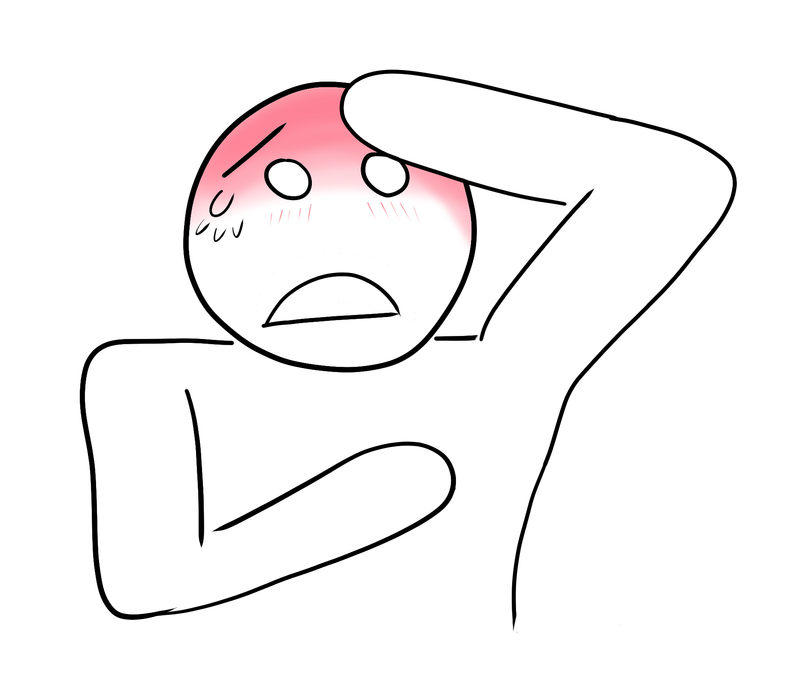
Humans conversely are very well adapted to keep their body temperature constant even in very hot conditions. Evaporation of water - sweating - is by far the biggest cooling mechanism in human thermoregulation. Humans have evolved as persistance hunters: walking upright exposes a smaller surface area to the midday sun; while the head is still shaded by hair, the rest of the body is largely hairless to allow sweating at a much greater rate than most animals can. While walking on two legs sacrifices top speed, it also allows the breathing rhythm to be varied in much greater range with the gait, than quadrupedal animals can.5
The downside of this human specialization is the need for large amounts of water to power the evaporative cooling. While most desert animals conserve water through various mechanisms - Muad’Dib can live for years without drinking -, humans need copious amounts of water to keep going in hot conditions.
For urban planning this means, that it is important to provide easy access to potable water, especially in places where people are expected to be active - playgrounds, sport grounds, public parks and so on. Unlike camel blood, human blood quickly becomes more viscous when dehydrated. This results in impaired thermoregulation and ultimately heat stroke and is one of the underlying reasons for excessive death rates during heat waves. Providing access to water and shaded areas to rest are a good strategy for placemaking in the light of climate change.
Another factor that plays into this is clothing: in many countries, long-sleeved shirts, full-length trousers and even jackets and ties remain the social norm in the workplace. A conscious change of these habits will make a decent contribution towards climate change adaption and even save energy because air conditioning can be set to higher temperatures.
Urban Planning Takeaway: Provide easy and frequent access to potable water, especially in places where people might by physically active. Foster any practice that allows people to sweat more effectively.
Volume and surface
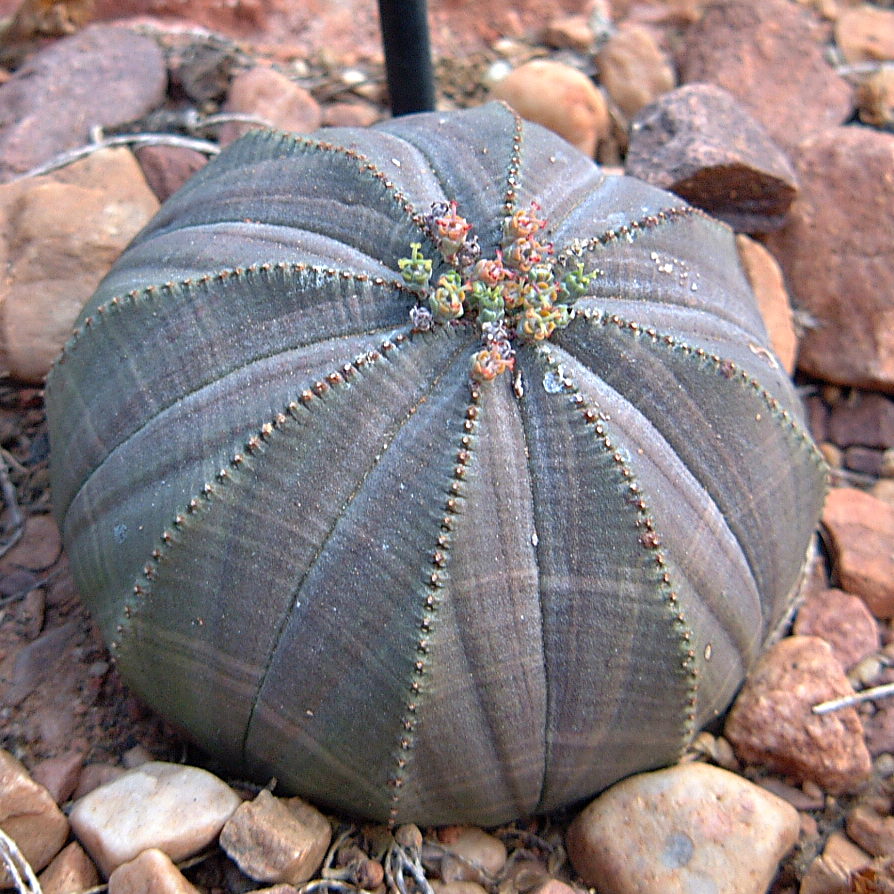
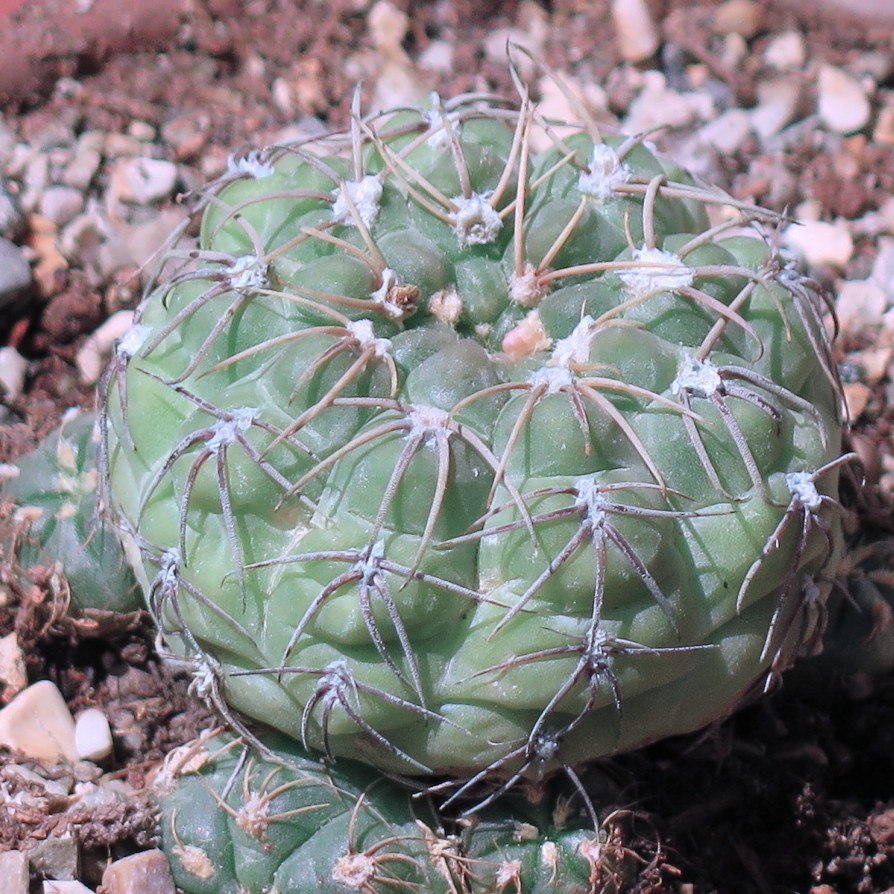
Another relevant adaption to hot conditions can be found in plants. In general, plants strive for high amounts of leaf surface to power photosynthesis which in turn let’s them grow faster and higher to harvest even more sun power. The downside of that is, that this large surface needs to be cooled and therefore results in high water loss. For this reason, most desert plants have a much lower surface to volume ratio than plants in regions with plenty of water.
The Guiana Amazonian Park, one of the largest rain forest preservation parks in the world, lies on the same latitude as the Kenyan Chalbi Desert - both regions receive about the same amount of solar radiation - almost the highest amount of the world actually, with both regions being very near the equator, yet their difference in water availability leads to completely different survival strategies for plants. In the rain forest, solar radiation is the scarcest resource so plants need large leaf areas and try to outgrow other plants. In the desert, water is the scarcest resource so plants need to conserve water and have extremely low leaf areas (or arguably none at all).
Cacti and succulents, the most numerous desert plants often do not form leaves at all, for them, scientists look at the surface to volume (or mass) ratio (not the leaf surface to volume ratio). The reason for this difference in physical form is simple: a large volume means much storage space for water and nutrients and a low surface area means smaller evaporation losses6, all of which helps to survive hot and dry conditions. The downside is the diminished amount of photosynthesis, which lets cacti grow much slower than deciduous plants.
Back to urban planning: during hot conditions it is beneficial for buildings (quarters) to minimize their surface area vs. volume, to take on as little heat as possible from the environment while maximizing the usable indoor volume. The opposite is true, when cooling buildings at night: the larger the surface area, the faster buildings can cool down, minimizing the need for air conditioning. This can be realized with sun roofs and canopies (see also shade above), retractable roofs and all kinds of openings in structures.
Additionally, prevailing wind directions and velocities during hot summer conditions in interaction with building geometries, trees, terrain and man-made structures influence daytime heat intake and nighttime heat shedding. For our simulations we analyze local climatic conditions and optimize building envelopes and tree locations for optimal wind flow and night time cooling. Additionally architects can work with retractable roofs, smart shading devices and nighttime ventilation.
Urban Planning Takeaway: Minimize daytime surface area of buildings, ventilate at night and adjust building envelopes for optimal cooling under local prevailing flow conditions.
Concluding remarks
Climate change is advancing fast and will challenge cities in many ways, impacting on the majority of humanity that lives in urban environments. Urban planners, architects and communities need to adapt equally fast in order to mitigate its impact. While certainly challenging there are a number of adaption lessons that we can learn from nature to greatly improve how our built environment performs under the changed conditions. Smart, nature based solutions in combination with human engineering ingenuity will play a mayor role in this.
If you’d like to involve us in your planning process, let us know! We are also open to participate in research projects that fall into our area of expertise.
Acknowledgements
We’d like to thank the ecosystem experts of the Desert House of the Zoo Vienna for their valuable input and support regarding temperature gradients in deserts and their example of convergent evolution in desert plants. Desert plant photos are adjusted from their original source (Euphoria obesa and Gymnocalycium uruguayense) as well as man sitting in the shade all under CC BY 2.0.
There is not much literature about small-scale air temperature gradients above ground. The numbers shown here are from a number of publications that looked into different aspects of desert temperatures and where merged into a coherent picture by us. A good source for soil temperatures is for example: Walsberg, Glenn. (2000). Small Mammals in Hot Deserts: Some Generalizations Revisited. BioScience. 50. 109-120. https://academic.oup.com/bioscience/article/50/2/109/321773 ↩
see https://www.cityoflondon.gov.uk/assets/Services-Environment/wind-microclimate-guidelines.pdf ↩
Places where people are very active profit less from shading since physical activity generates up to around 4 times more heat. Still, for limited areas that are used in full sunlight, reducing the heat input into the human body will still be beneficial. ↩
A human would reach a comparative running speed of 700 km/h when factoring the difference in body size. ↩
Quadrupedal animals are breathing in synchronization with their gait, because their locomotion compresses the lungs. Humans can easily breath twice for each step or only every second step. All these adaptions allow humans to follow prey in conditions that will eventually exhaust the prey until it can be caught because environmental conditions, high physical activity and denial of rest will result in exhaustion and heat stroke for the prey. ↩
A sphere has the highest volume to surface ratio of all geometric forms, hence the spherical form of many cacti and succulents. Also animals living in very cold areas follow this scheme to conserve warmth and minimize heat losses over a surface that is as small as possible - think of a resting ice bear or husky for example. ↩
Published: